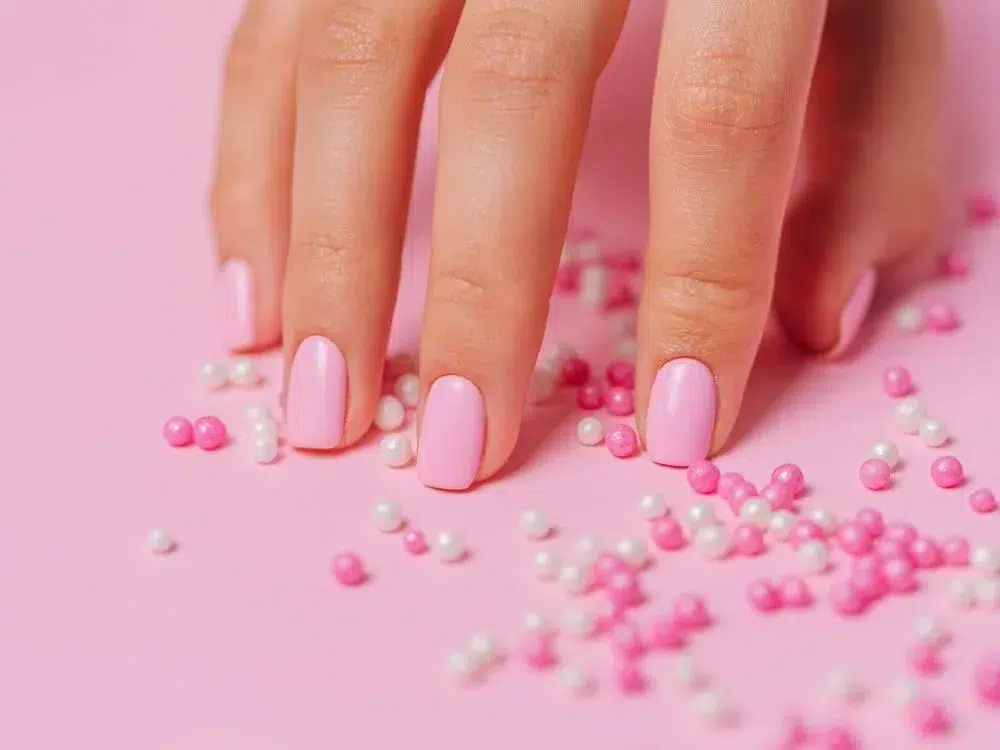What is Dry Manicure?

Share this post
What is Dry Manicure?
What is dry manicure? It’s a practical hand and nail care method performed without using water. It’s completed faster than a classic manicure as there’s no soaking step. The risk of bacterial growth is greatly reduced as special lotions or cuticle oils are used to soften the cuticles.
Additionally, this method adopts an environmentally friendly approach. As there’s no water consumption, it provides advantages in terms of both hygiene and sustainability. Waste is also minimized as only necessary products are used at each stage of care.
Differences Between Dry Manicure and Classic Manicure
- Water Usage
In classic manicure, nails are softened by soaking in a bowl of water. In dry manicure, only care lotions or oils are used. - Time Management
Classic manicure involves soaking and waiting in warm water. Dry manicure takes less time as it eliminates this step. - Hygiene and Bacterial Risk
The risk of bacterial growth increases during water soaking. In dry manicure, bacterial formation is reduced to almost zero.
Moreover, it creates a safer care alternative for use in salons and at home due to its superior hygiene.

How Can Dry Manicure Be Done?
- Preparation for Dry Manicure
Start by disinfecting your hands and remove any nail polish if present. Then, soften the cuticles by applying cuticle lotion or care oil. - Cuticle Arrangement
Gently push back the sufficiently softened cuticles using a wooden or metal pusher. - Filing and Shaping
Shape your nails as desired; use the file in one direction to protect the nail layers. - Care and Moisturizing
You can apply nourishing oil or strengthening polish to the nail surface. Complete your care by moisturizing your entire hands with a nourishing cream.
Additionally, it’s possible to prevent bacterial or microbial growth by following sterilization rules at every step.
Advantages
- Time-Saving
Total duration is shortened as there’s no waiting phase. - More Hygienic
The danger of bacterial growth in stagnant water is eliminated. - Eco-Friendly
Reduced water usage supports a sustainable care approach.
Moreover, it reduces the risk of irritation in the cuticles. This largely prevents redness and sensitivity that may occur after the care process.
What Should Be Considered Afterwards?
- Regular Moisturizing
Keep the skin on your hands and around your nails soft with nourishing creams. - Sterile Tools
Disinfect tools such as files, scissors, and cuticle pushers after each use. - Periodic Care
Depending on your nail growth rate, you can plan care intervals every two or three weeks.
Also, pay attention to your daily cleaning habits. If you wash your hands frequently, don’t forget to support this with moisturizing cream.
Who Should Prefer It?
- Busy People: Ideal for those seeking quick and practical care as there’s no waiting time in a water bowl.
- Those with Sensitive Cuticles: The risk of swelling and irritation caused by excessive soaking is eliminated.
- Environmentally Conscious Individuals: You can adopt an eco-friendly approach with this method that minimizes water consumption.
Additionally, those who don’t want to go to professional salons can easily prefer this method as it can be applied at home with simple tools.
Conclusion
Dry manicure offers a more hygienic, quick, and practical care experience without using water. Standing out with its eco-friendly approach, this method helps you maintain a well-groomed hand and nail appearance even within your busy schedule.
Additionally, it facilitates developing a regular care routine as it has simple steps that you can easily apply at home. As a result, anyone who wants to have healthy nails and save time should prefer the dry manicure method.
content from the blog

What is Almond Nail, How is it Done?
“What is an almond nail and how is it done?” is a question many people are curious about. In recent

What Are Ballerina Nails and How Are They Done?
Ballerina Nails: An Elegant and Aesthetic Choice Ballerina nails are one of the most preferred nail styles by women. In
Would you like to contact us?
You can click the button below to make an appointment with a simple touch.

